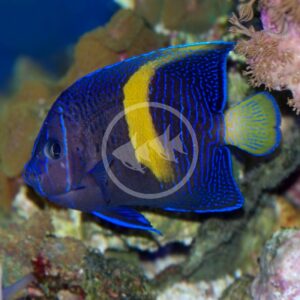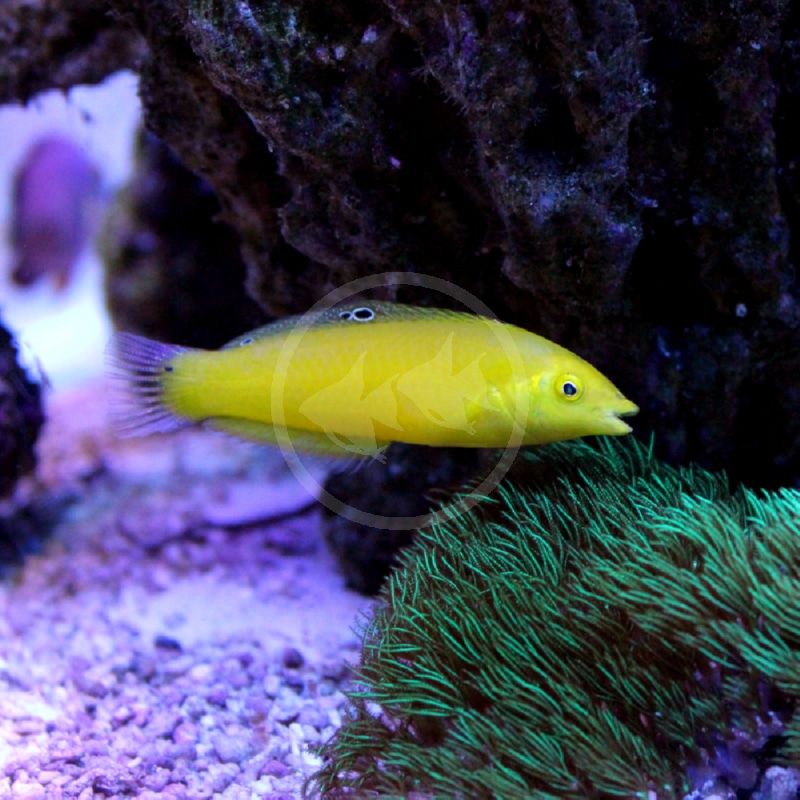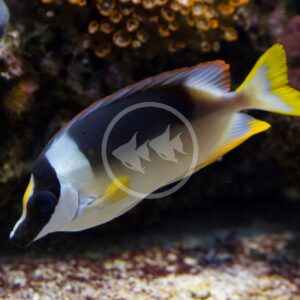
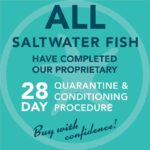


WRASSE – YELLOW Halichoeres chrysus
$59.99 – $125.99
The Yellow Wrasse, also known as the Chrysus Wrasse, Yellow Coris Wrasse, or Canary Wrasse, is found throughout the Indo-Pacific. Although ‘Yellow Coris Wrasse’ is one of its identifiers, it is not a true Coris wrasse. Like all wrasses in the genus Halichoeres, the Yellow wrasse absolutely requires a moderately-sized to fine sandy substrate in order to be able to bury themselves at night for protection or if felt threatened during daylight. In fact, it is very common for your newly introduced wrasse to immediately bury themselves once released into the aquarium. The Yellow wrasse adds a bright pop of yellow to the aquarium at any life stage or sex. Juvenile or female Yellow wrasses may retain a black spot or two in their dorsal fin, while males tend to have none. Additionally, male Yellow wrasses will develop subtle green markings on their face. Yellow wrasses are sought after for not only their active and colorful presence, but for their incredible natural ability to control and eliminate nuisance red Planaria flatworms, fireworms and pyramidellid snails that sometimes hitch hike on corals or live rock. This behavior is exhibited across most Halichoeres wrasses. Yellow wrasses can reach a size of approximately 5″.
Care Level: Moderate
Temperament: Peaceful
Reef Compatible: Yes
General Description: The Yellow Wrasse, also known as the Chrysus Wrasse, Yellow Coris Wrasse, or Canary Wrasse, is found throughout the Indo-Pacific. Although ‘Yellow Coris Wrasse’ is one of its identifiers, it is not a true Coris wrasse. Like all wrasses in the genus Halichoeres, the Yellow wrasse absolutely requires a moderately-sized to fine sandy substrate in order to be able to bury themselves at night for protection or if felt threatened during daylight. In fact, it is very common for your newly introduced wrasse to immediately bury themselves once released into the aquarium. The Yellow wrasse adds a bright pop of yellow to the aquarium at any life stage or sex. Juvenile or female Yellow wrasses may retain a black spot or two in their dorsal fin, while males tend to have none. Additionally, male Yellow wrasses will develop subtle green markings on their face. Yellow wrasses are sought after for not only their active and colorful presence, but for their incredible natural ability to control and eliminate nuisance red Planaria flatworms, fireworms and pyramidellid snails that sometimes hitch hike on corals or live rock. This behavior is exhibited across most Halichoeres wrasses. Yellow wrasses can reach a size of approximately 5″. ID Note: The appearance of this wrasse is often confused with two other wrasse species. The first is the Canary Top Wrasse (Halichoeres leucoxanthus), but an easy way to tell these two species apart is the fact that the Canary top wrasse has a white belly – a characteristic that the Yellow wrasse does not have (i.e., completely yellow overall). The second wrasse, a more dangerous mistake to make, is a juvenile or female Sunset Wrasse (Thalassoma lutescens). To add insult to injury, the Sunset wrasse is sometimes even sold as a “Yellow Wrasse.” First, notice their genera names are completely different; the true Yellow wrasse comes from the Halichoeres genus, a group of reef-safe wrasses, whereas the Sunset wrasse comes from the Thalassoma genus, a group of not reef-safe wrasses. Appearance wise, Sunset wrasses that are offered will be generally much larger than standard Yellow wrasses, their body shape is stockier with a lunate tail and bigger mouth, the scales on its body will appear pronounced and the markings on its face will be more defined. Behaviorally, Yellow wrasses are very coy while Thalassoma wrasses are quite the opposite, being somewhat pushy.
Diet Requirements: Yellow wrasses are carnivores, actively hunting tiny crustaceans (e.g., copepods, featherdusters) throughout the day. A diet consisting of various meaty preparations such as brine shrimp, mysis shrimp, calanus and other mixed frozen foods that contain algae, such as spirulina, will maintain optimal health and coloration. We highly encourage soaking frozen foods in vitamin and fatty acid supplements, as these wrasses have very high metabolisms. Multiple, small feedings per day rather than one large feeding can also help and in turn create more of a natural environment for a Yellow wrasse as it would feed in the wild. Yellow wrasses will also accept high quality flake or pellet foods, which is great for nutritional gaps and variety.
Care Requirements: An established, minimum 55 gallon aquarium with a 3″ sandbed at the very least is needed for a Yellow wrasse. Small individuals may be kept in smaller quarters (no less than 30 gallons) so long as it is upgraded accordingly. A tight fitting lid is a must because these wrasses are known to jump out of aquariums. Yellow wrasses enjoy a variety of rock work and crevices to swim through and around while they hunt. Such live rock arrangements can also help to make it feel secure and encourage more outgoing behavior. Given their peaceful nature, a Yellow wrasse should not be kept with overly aggressive species, especially those that can outcompete it in food resources. It is best to add a Yellow wrasse before larger or more active fish in order to allow it to acclimate to the environment. Use discretion based on the wrasse’s size for appropriate tank-mates. Yellow wrasses are compatible with other peaceful wrasses, including different species in Halichoeres. Multiple Yellow wrasses can even be successfully kept together, so long as the aquarium is large enough to support them. In this scenario, it is best to add all individuals at once for the best chance at success. Given that the Yellow wrasse is a “true” reef associated species, they feel most at home in such an environment. Corals will be left unharmed, though with an appetite for undesirable invertebrates (i.e., planaria, fireworms, and nuisance snails), keep in mind that sometimes a Yellow wrasse may make a mistake on decorative invertebrates. Recommended water conditions, 72-78° F, KH 8-12, pH 8.1-8.4, salinity 1.020-1.025.
Purchase Size: XSmall: 1” to 1-3/4”; Small: 2″ to 2-3/4″; Medium: 3″ to 3-3/4″; Large: 4″ to 5″
Note: Your item may not look identical to the image provided due to variation within species. Purchase sizes are approximate.
Dry goods orders are shipped via US Postal Service or UPS to the address provided at checkout based on the selection made in your website shopping cart. Product is carefully packed to help prevent any damage during shipping. Once processed you will receive a shipment notification via email with tracking number, and delivery notification. Please allow 48 hours for processing after your order is placed.
Perishable items (i.e. live plants, refrigerated/frozen foods) are shipped via US Postal Service 2-3 day to the address provided at checkout for a $25.00 flat rate charge. Items are packed with secure packing material and heat, cold, or Cryo packs as needed to maintain safe temperatures during transit. If one or more perishable items are in the shopping cart at checkout the $25.00 perishable shipping charge will automatically appear and need to be selected. Once processed you will receive a shipment notification via email with tracking number. Please allow 48 hours for processing after your order is placed.
Livestock (i.e. fish, invertebrates, coral) are shipped via UPS Overnight to the address provided at checkout for a $55.00 flat rate charge. Livestock is packed in insulated styrofoam boxes with secure packing material and heat, cold, or Cryo packs as needed to maintain safe temperatures during transit. If one or more livestock items are in the shopping cart at checkout the $55.00 livestock shipping charge will automatically appear and need to be selected. Livestock is shipped Monday through Wednesday ONLY (no weekend delivery is available) weather permitting, and we reserve the right to delay shipping until conditions are appropriate for safe arrival. Once your order is placed we will contact you to arrange the best shipping date based on these criteria. Someone must be available to receive the livestock order on the first delivery attempt. Once processed you will receive a shipment notification via email with tracking number. Please allow 48 hours for processing after your order is placed.
For mixed dry goods/perishable & livestock orders items will be shipped via their corresponding shipping methods outlined above. Dry goods will be shipped via US Postal Service or UPS based on your selection and checkout, while livestock will ship via UPS Overnight for a $55.00 flat rate charge. You will receive separate notifications and tracking numbers for the dry goods and livestock. Please note due to different carriers and shipping methods dry goods and livestock may arrive on different days.
Related products
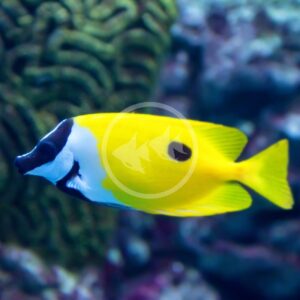

RABBITFISH – ONE SPOT FOXFACE Siganus unimaculatus
$119.99 – $169.99RABBITFISH – MAGNIFICENT FOXFACE Siganus magnificus
$249.99 – $349.99

ANGEL – KORAN Pomacanthus semicirculatus
$89.99 – $199.99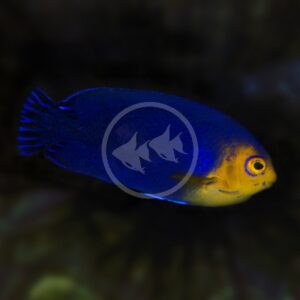

ANGEL DWARF – PYGMY ATLANTIC / CHERUB Centropyge argi
$69.99 – $99.99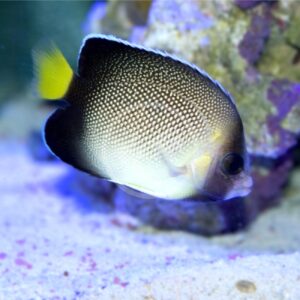

ANGEL – YELLOWTAIL CREAM Apolemichthys xanthurus
$129.99 – $179.99

WRASSE – LEOPARD VERMICULATE Macropharyngodon bipartitus
$129.99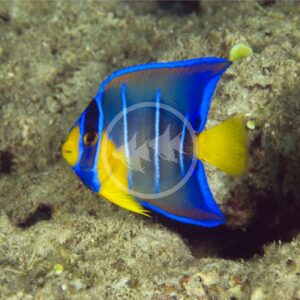

ANGEL – BLUE Holacanthus bermudensis
$349.99